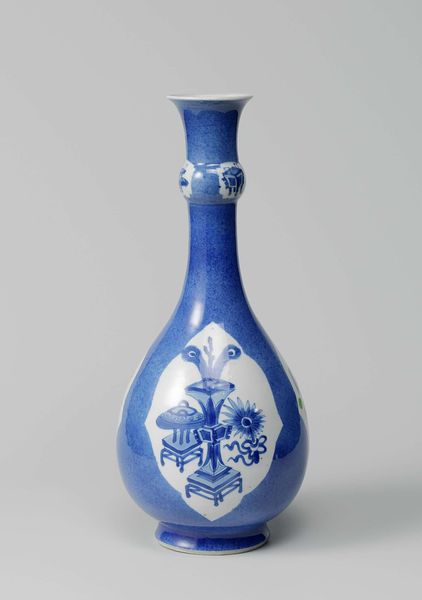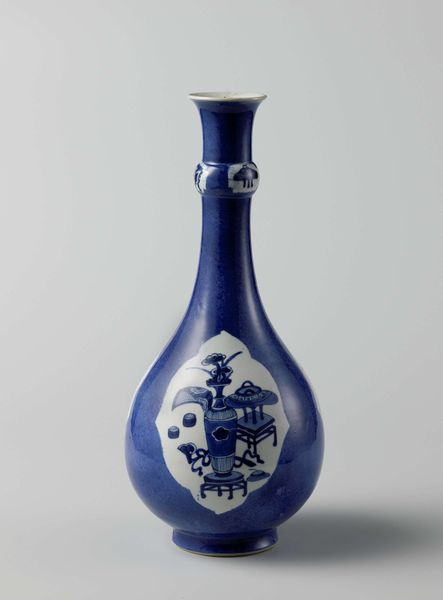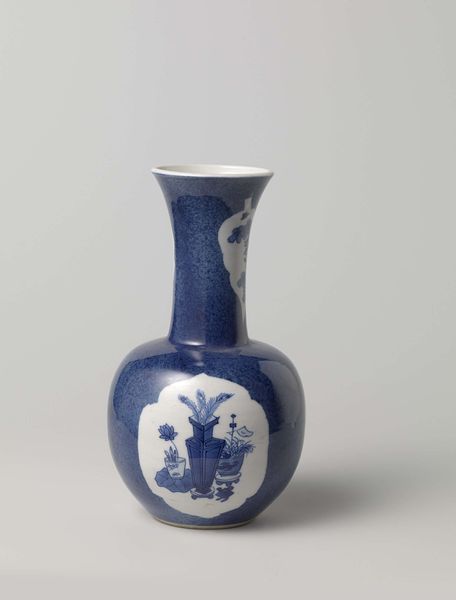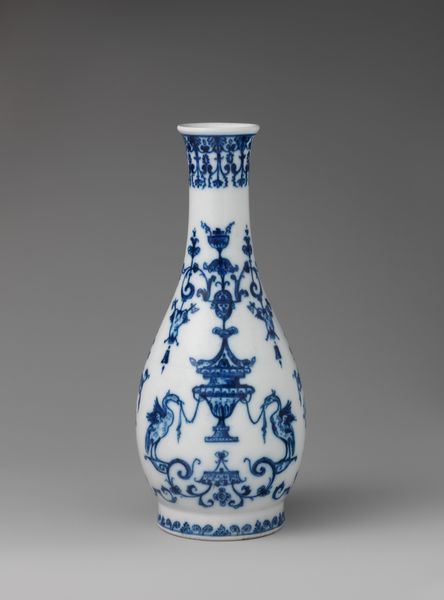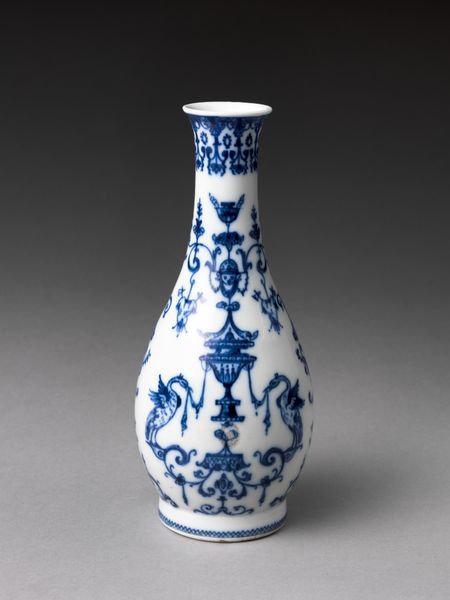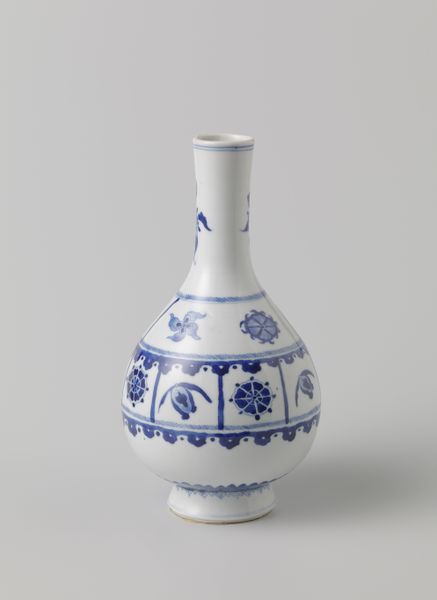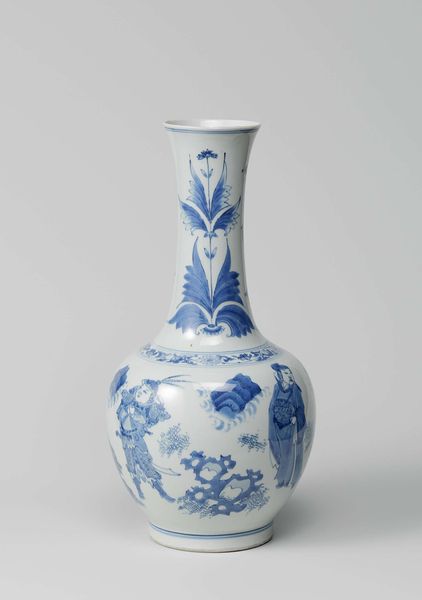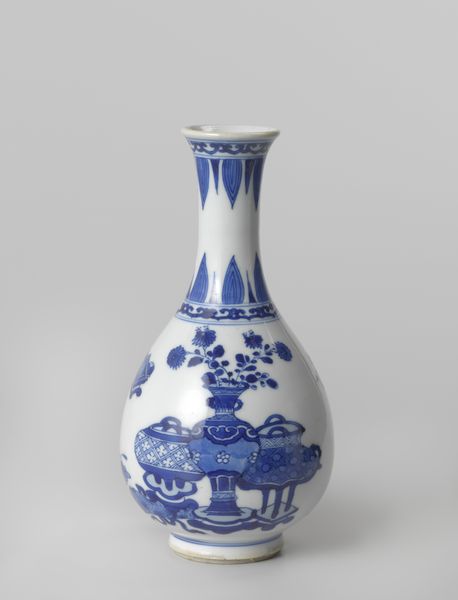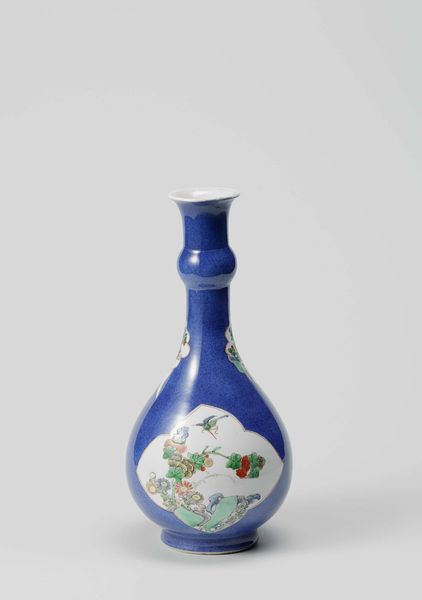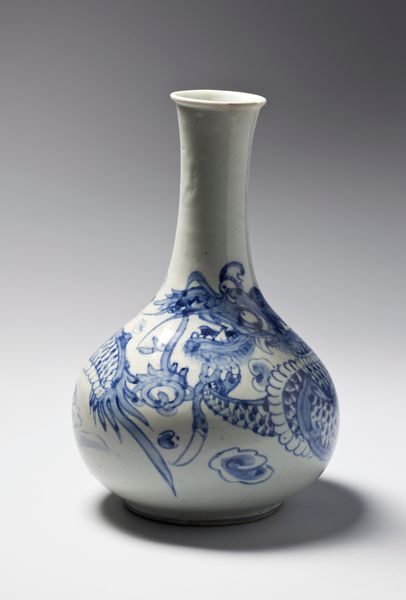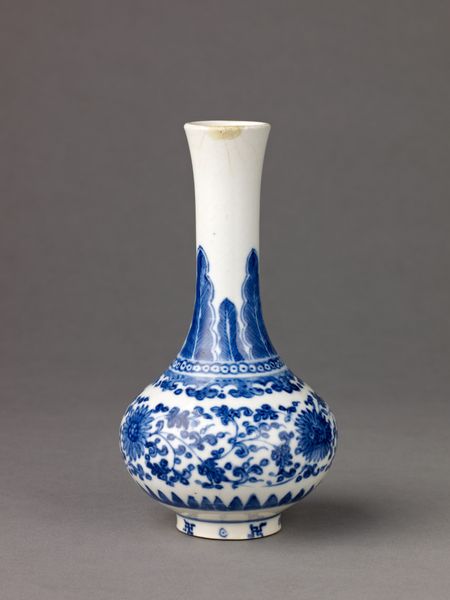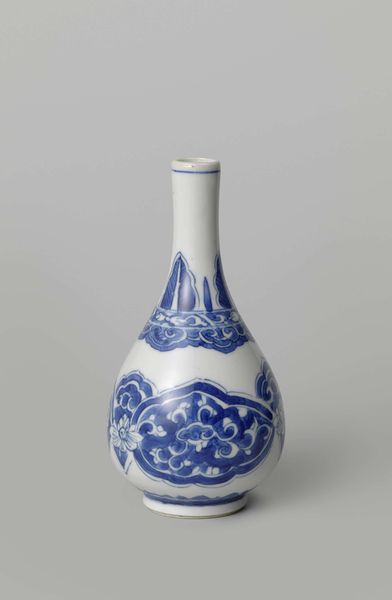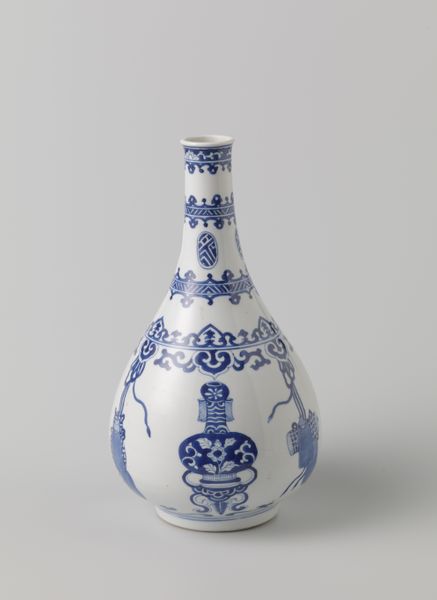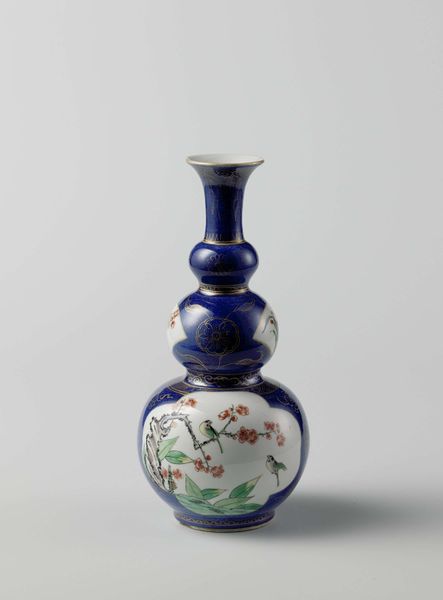
Bottle vase with powder blue, antiquities and precious objects c. 1700 - 1724
0:00
0:00
ceramic, porcelain
#
baroque
#
asian-art
#
ceramic
#
porcelain
#
decorative-art
Dimensions: height 32.7 cm, diameter 14 cm
Copyright: Rijks Museum: Open Domain
Editor: Here we have a porcelain bottle vase from around 1700 to 1724. It's currently held at the Rijksmuseum. I find the contrast of the blue with the white decorative art motifs intriguing. What stories do you think this piece has to tell? Curator: I see a fascinating artifact of cultural exchange and power dynamics. The powder blue glaze, developed in China, was highly coveted in Europe. So the vase itself becomes a signifier of wealth, of access to global trade networks controlled by colonial powers. Look closer at the motifs. Editor: I notice depictions that look like, well, like antiquities and other precious objects… Curator: Precisely. Notice how those objects are themselves signifiers of status and learning. Think about who would have owned this object and what social circles they occupied. Editor: A wealthy person interested in the art and culture of the world, I suppose. Curator: But within that context, who *benefits* from global trade at this time? It is impossible to separate the beauty of the object from the reality of its production and consumption. What's more, Asian art was highly fetishized and often misunderstood at this point in Europe, used more as a curiosity than respected for its own artistic heritage. Do you see that dynamic at play? Editor: So it’s not just a pretty vase, it’s a reminder of how wealth, trade, and even art appreciation can be intertwined with social inequities. I will never see this object in the same way again. Curator: Precisely. Recognizing those difficult histories doesn’t diminish our appreciation for the artistry, but it certainly complicates it, and encourages more nuanced dialogue.
Comments
No comments
Be the first to comment and join the conversation on the ultimate creative platform.
